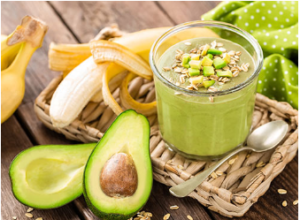It’s simple to feel overrun by the most recent healthy eating fad or popular ingredient. But regularly making healthy food and drink choices is what constitutes excellent nutrition. With healthy eating habits, you can indulge in foods and drinks that suit your tastes, cultural customs, and financial constraints. Eating Tips
Fruits, vegetables, whole grains, dairy, and protein are the mainstays of a healthy diet. Low-fat or fat-free milk, lactose-free milk, and fortified soy beverages are among the dairy options that are advised. Animal milk and soy drinks are the only plant-based beverages with comparable nutritional value. Seafood, lean meats and poultry, eggs, legumes (beans, peas, and lentils), soy products, nuts, and seeds are all suggested sources of protein.
Read Also: Keto Meal Picky Eaters
Increased fiber
a mother giving her infant a carrot Fiber keeps our digestive systems healthy and makes us feel satisfied for longer. Additionally, fiber decreases cholesterol levels and aids in blood sugar regulation. Good sources of fiber include whole grains, legumes, fresh fruits and vegetables, nuts, and seeds.

Do this to increase fiber:
- Prepare sliced raw vegetables as a quick snack. Carrots and celery will stay more crisp if they are refrigerated in water.
- Oatmeal or other healthy grain foods like bulgur or teff are good ways to start the day. Top your cereal with berries, pumpkin seeds, or almonds for even additional fiber.
- To add fiber, texture, and taste to your salad, mix in half a cup of beans or lentils.
- Enjoy whole fruit—maybe a pear, apple, melon slice or passion fruit—with a meal or as dessert.
Boost calcium and vitamin D intake
Together, calcium and vitamin D support ideal bone health. Sunlight can help our bodies produce vitamin D, but some people may have trouble doing so, and too much sun exposure might increase the risk of skin cancer. While very few foods naturally contain vitamin D, many meals and drinks have this important ingredient added. View calcium and vitamin D food sources.
Try this to enhance your consumption of calcium and vitamin D:
- With your meals, sip a fortified dairy beverage.
- Include a tin of sardines or a packet of salmon every week when you pack your lunch. More calcium is present in salmon and sardines with bones than those without.
Read Also: Eat Healthy Food
Increase the potassium
The kidneys, heart, muscles, and nerves all benefit from adequate potassium levels. Low potassium intake raises blood pressure, reduces bone calcium, and increases the risk of kidney stones.
Potassium levels in the blood can be too high in patients with chronic renal disease and those taking specific drugs. However, the majority of Americans need to include more potassium in their diets. see potassium-rich foods.
Try this to add more potassium:
- Try out some fresh recipes that call for Swiss chard, lima beans, or beet greens.
- Use one cup of 100% prune juice or 100% pomegranate juice to add some variation to your drinks.
As a snack, have a banana. - Enjoy a recommended dairy product or 100% orange juice with your meals.
Cut back on added sugars
a pitcher of lemon water
The use of excessive amounts of added sugar can increase your risk of weight gain, obesity, type 2 diabetes, and heart disease. Some foods, like fruit and milk, naturally contain sugars. Sugars and syrups that are added to foods and beverages during processing or preparation are referred to as added sugars. There are other names for added sugars, including cane juice, corn syrup, dextrose, and fructose. Additionally, added sugars include honey, maple syrup, and table sugar. Sugar added to drinks is a common occurrence.

Try this to reduce additional sugars:
- Instead of sugary beverages, drink water. For extra taste, include berries or pieces of lime, lemon, or cucumber.
- Put fruit in your yogurt or cereal for sweetness.
- Avoid stocking up on sweetened beverages and food. Drink water instead, and keep sliced fruits and vegetables on hand for snacking.
- Skip the flavored syrups and whipped cream at coffee establishments. Request low-fat, fat-free milk or a fortified, unsweetened soy beverage. Or return to the fundamentals with black coffee.
Read the nutrition information on food labels and select items with little to no added sugar.
Substitute unsaturated fats
Avocado latte
Your heart can be protected by substituting healthier unsaturated fats for saturated fat. fatty meats such beef ribs and sausage, whole milk, full-fat cheese, butter, and cream cheese are typical sources of saturated fat.
To provide us energy, support the growth of healthy cells, and aid in the absorption of some vitamins and minerals, we require some dietary fat. However, saturated fat is not as healthy for us as unsaturated fat. Saturated and unsaturated fat common sources can be found here.

Try this to substitute unsaturated fats for saturated fats:
- In a smoothie, use low-fat yogurt and an avocado in place of whole milk.
- Instead of cheese, top salads with nuts or seeds.
- Instead of using meat as a source of protein, try using beans or seafood.
- Instead of using butter or margarine, try cooking with canola, corn, olive, peanut, safflower, soybean, or sunflower oil.
- Low-fat or fat-free milk and cheese should be used instead of full-fat varieties.
Limit your sodium intake
Consuming excessive sodium can increase your risk of hypertension, heart attacks, and stroke. The majority of the sodium that Americans eat comes from prepared and packaged foods. Although sodium comes in many different forms, 90% of the sodium we eat comes from salt. See the top sodium sources.
Try this to reduce your salt intake:
- Use fresh herbs, a squeeze of lemon juice, or a splash of no-salt spice blends to flavor your food in place of salt.
- Consume processed and prepackaged foods rich in salt less frequently. Numerous everyday items, such as breads, pizza, and deli meats, are rich in salt.
- Find low-sodium products at the grocery store by reading the Nutrition Facts label.
Choose a Wide Range of Colors
a vibrant lunch filled with different vegetables
Aiming for a range of colors on your plate is a good habit. Dark, leafy greens, tomatoes, oranges, and even fresh herbs are among the fruits and vegetables that are particularly high in vitamins, fiber, and minerals.

Do this:
- Fresh herbs can be added to whole wheat spaghetti or a salad.
- Create a red sauce using fresh herbs, spices, and tomatoes (or canned tomatoes with minimal sodium or no salt added).
- To add color and nutrients to stews and omelets, add diced vegetables such peppers, broccoli, or onions.
- Choose your favorite fruit to garnish low-fat, unsweetened yogurt.
